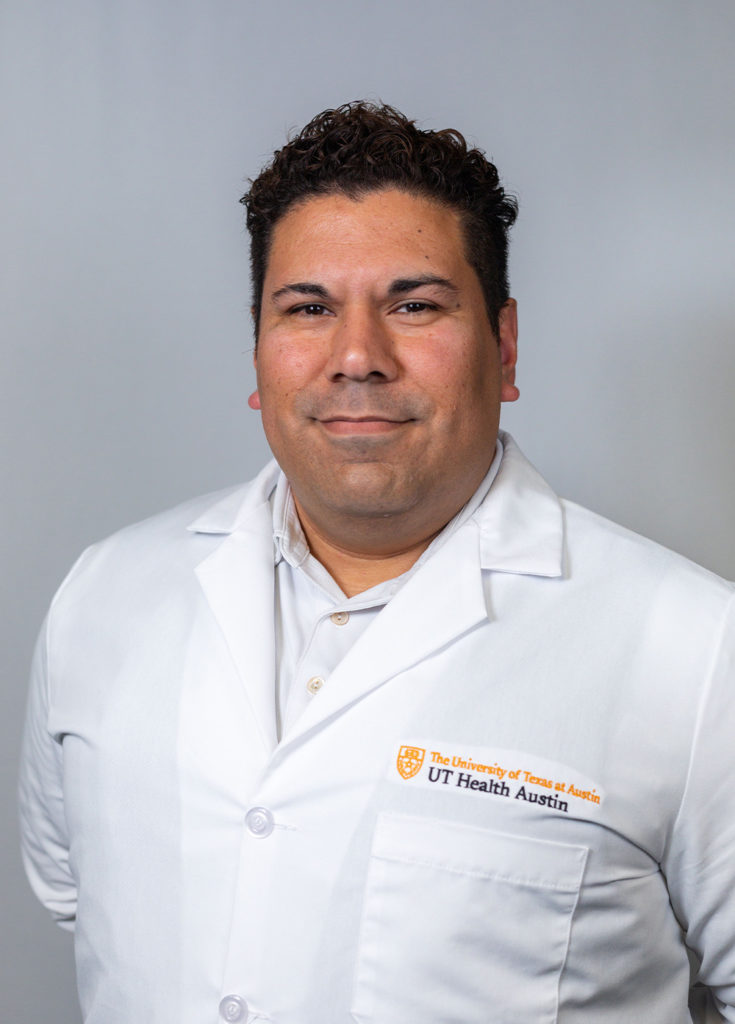Dr. Guzman addresses common misconceptions surrounding sports injuries and recovery approaches.
Sponsored Content brought to you by UT Health Austin
J. Mica Guzman, Jr., MD, MBA, DABFM, CAQSM, is a board-certified family medicine specialist and the Primary Care Clinical Director of UT Health Austin’s Sports and Injury Clinic within the Musculoskeletal Institute. He specializes in caring for patients with sports-related and musculoskeletal injuries. Additionally, Dr. Guzman is an assistant professor in the Dell Medical School Department of Surgery and Perioperative Care and a courtesy assistant professor in the Dell Medical School Department of Population Health.

There are many myths regarding sports-related injuries and recovery methods that often result in either the incorrect treatment of an injury or the overlooking of a more serious problem. If you get injured while participating in a physical activity, it’s best to receive care under the guidance of a trained sports medicine specialist for the safest and quickest route to recovery.
UT Health Austin board-certified family medicine specialist and fellowship-trained sports medicine specialist J. Mica Guzman Jr., M.D. regularly works with patients to break down misconceptions related to injuries and how best to treat them.
Myth #1: Apply heat to an acute injury.
The use of heat in treating a new injury can increase circulation to the area, which may result in increased swelling and inflammation. This can slow down the healing process and add to the throbbing pain you may be experiencing. If you sustain an injury during physical activity, in most cases, the safest and most effective course of action is to apply ice or cold therapy to the affected area.
Myth #2: Rest is always best.
Immediately after an injury, you should stop participating in your activity and rest. Working through the pain can worsen damage and prolong your recovery process. Although rest is important, depending on the type of injury, gentle movement or activity modification can help bring fresh blood flow to the area, delivering oxygen and nutrients that aid in the healing process. The key is to keep movement gentle, slow and as pain-free as possible. Additionally, opting for an exercise that does not put pressure on the injured area can help keep the rest of your body fit and strong.
Myth #3: If you can move it, it must not be broken.
This is a pretty common misconception. Depending on where a break or fracture occurs, your ability to move the area may not be severely affected. Small breaks or fractures in the lower leg, in the elbow or arm and in the feet are often improperly self-diagnosed because people tend to still have movement and may not always experience intense pain or swelling. Symptoms of a break or fracture can include persistent pain, swelling, tenderness or bruising. If you are experiencing these symptoms, it’s important to get professional help to ensure the bones are properly aligned and held in place while they heal to avoid infection or permanent deformity.
Myth #4: Surgery is your only option.
Surgery is an invasive treatment approach, and the team at UT Health Austin will likely want to explore alternative options before making a recommendation for surgery. Depending on the extent of your injury, physical therapy and other forms of rehabilitation are just as effective, if not more so, in healing the body. While full ruptures and certain types of fractures may require a surgical operation, there are many other types of injuries, including partial tears and minor degeneration, that often heal on their own or can be treated nonsurgically with the appropriate therapy regimen.
Recovering from an injury involves more than just resting. It requires implementation of activity modifications, re-education on training and, oftentimes, retraining on proper form and movement. To reach maximum recovery and to prevent future injuries, reach out to a health care professional. Don’t fall victim to common myths and trust your clinicians to help you get back in the game.
To learn more about UT Health Austin’s Sports and Injury Clinic or to make an appointment, call 1.833.UT.CARES or visit uthealthaustin.org.


